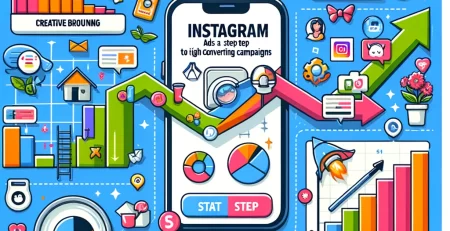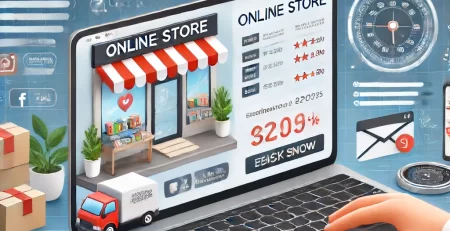These 5 Facebook Sales Funnel Techniques Will Change the Way You Use Social Media Forever
As we approach 2023, Facebook is still the most-used social network worldwide, with up to 2.96 billion monthly active users. Naturally, this makes it one of the best platforms to reach a massive number of your target audience.
But there’s a problem. Most Facebook users use the platform for its primary purpose – being social. They spend most of their time liking statuses, commenting on their friends’/families’ photos, and private messaging. This makes it harder for marketers to see a return on investment (ROI) on their social media activities.
But here’s the thing. Facebook remains a powerhouse when it comes to generating leads and sales. If you’re not getting the ROI you intend, the problem is not Facebook, it’s the approach you take to sell. That’s where the Facebook sales funnel comes in. It’s a powerful marketing strategy that can help you generate leads, increase your ROI, and boost your business growth.
What Is a Facebook Sales Funnel?
Facebook sales funnel is a series of ad campaigns designed to guide Facebook users along their buyer’s journey. It involves using relevant messages appealing to users in the different stages of the buying process, from a stranger to a paying client.
Just like with a traditional sales funnel, a Facebook sales funnel is separated into three different stages:
- Awareness stage: This is the Top of the Funnel (ToFU) stage, where buyers don’t know your product. All they have is a problem and are looking for a solution. They are not ready to purchase yet, meaning you can’t sell to them. Instead, you need to attract their attention by posting a variety of content (blog, infographics, videos, eBooks) that points out their problem and promises to offer a solution.
- Consideration stage: This is the Middle of the Funnel (MoFU) stage, where buyers are now aware of your product and are interested. It’s where you nurture your audience by showing them how unique you are and why they should buy from you.
- Decision/conversion stage: This is the Bottom of the Funnel (BoFU) stage, where you aim to get the prospects to act. Your focus is on conversion and retention.
Why Consider Facebook Marketing?
Here’s an interesting fact. The number of daily active users on Facebook reached around two billion during the third quarter of 2022. These users spend, by day, an average of 33 minutes on Facebook, making it the platform with the largest amount of time spent daily.
That’s just one of the top reasons you should leverage your business’ presence on Facebook. Here are other reasons to consider Facebook marketing in your business:
- Facebook ads are the cheapest form of advertising.
- Facebook advertising is fast, allowing you to reach millions of prospects immediately.
- Facebook allows you to micro-target your exact audience.
- Facebook marketing supports better types of advertising, such as photos, videos, slideshows, stories, collection ads, and so on.
- Facebook offers multiple advertising objectives, allowing you to choose ads for your specific business goals.
- Facebook provides in-depth insight into ad performance, making it easier to track your ROI.
- Facebook marketing can help drive offline sales.
- Facebook marketing builds interactions with your ads with likes and comments, thereby improving engagement with your target audience.
- Facebook marketing can help you build your email list. For example, you can direct traffic to an external form on your website.
These are just some of the many benefits of utilizing Facebook marketing to grow your business.
5 Best Facebook Sales Funnel Techniques
The Facebook audience is an interesting lot that requires a calculated approach to generate leads and convert followers into buyers. Therefore, using a direct, bottom-of-funnel approach just won’t cut it.
You need to create an effective sales funnel that will attract and warm up cold audiences all the way to converting them into happy customers.
Here’s what you need to do:
1. Attract Prospects by Creating Segmented Content
The first stage in a buyer’s journey – awareness – is where you attract strangers, turning them into potential customers. As a business, you should be able to identify your target audience and the problems specific to them.
At this stage, the audience may or may not be aware of your brand. Nevertheless, you can relate to them by offering a solution to their problem. The goal here is to provide value and support.
How?
By using different forms of content, such as:
- Blog posts
- Webinars
- Infographics
- Videos
- eBooks
- slideshows
No matter the path you decide to take, make sure the content is high quality and valuable enough to pique the prospects’ interest to the point they seek more information about what you offer.
Another tactic is to answer questions your audience is curious about. This will increase engagement and build trust and more awareness. Generally, you’ll need a variety of engaging content to reach different segments of your audience.
2. Promote Your Content
Your next step is to find the right audience to post your content to. Consider starting with your “Warm” audience – people who are already aware of your brand and have expressed some interest. Typically, this will be your existing Facebook fans, but could also include prospects in your website retargeting list.
What you want to do is analyze the performance and engagement levels of the different types of content you’ve created. Which content drove the most sales? Such an analysis puts you in a better position to invest your money in a path that actually works.
Remember, your warm audience will respond favorably to highly engaging content. In turn, this can have a ripple effect on your cold audiences, influencing them to actively engage with your post.
While at it, target “Lookalike audiences”. These are people who share attributes (interests, habits, and behaviors) similar to audiences you already care about. You can turn this feature on in the “Audiences section”:
- Launch the Audiences section.
- Click “Create a Lookalike Audience”.
- Choose your source, location, and audience size, and click the “Create Audience” button.
Once you nail that, promote your best-performing content that resonates best with your audiences. This enables you to move a good chunk of your cold audience deeper into your Facebook sales funnel and become part of your warm audience. By this juncture, they are aware of your brand and ready to move on to the next stage.
3. Implement Effective Remarketing
Facebook marketing can be a tough nut to crack. The game isn’t over just because you converted a cold audience into a warm one. Chances are, they may not engage with your content the first time they find it. They need to be exposed to your brand multiple times.
Content remarketing is an effective way to do so. This repeated exposure makes them more likely to engage with your brand. And with increased interaction, you increase the odds of your audience becoming leads or conversions.
A tool you’ll find useful for your remarketing purposes is a Facebook pixel. This is a code you add to your website code that you use to remarket and bring potential customers back to complete a purchase. If you don’t have much experience with code, refer to this guide from Facebook on “How to setup and install a Meta pixel.” This tool learns about your customers’ interests and allows them to pick up from where they left off.
4. Offer Incentives for Purchase
You’ve nurtured the relationship with your audience this far. Leads should now feel more receptive toward purchasing at this stage. But don’t settle there. Try warming up your leads even more. You can do so by creating an ad that highlights the benefits of the product. This way, those with little doubts will be more convinced and ready to reach for their wallets.
Another effective approach is to offer incentives to those who engaged with your brand. While they might be ready to purchase, they may need a small push to reach a decision. For example, create a post with a 25 percent discount on your product that leads them directly to your product page to complete the purchase.
It’s also advisable to offer limited-time discounts. It’s been shown that urgency combined with discounts helps generate more sales.
Other offers worth considering include free subscriptions, free trials, free eBooks, bonuses, free shipping, and winning contests.
5. The Hard Sell
So, you’ve tried to woo potential customers using all kinds of incentives, offers, and bonuses. At this point, your leads are aware and familiar with your brand and warmed up to the thought of placing orders.
This is where you should focus on creating unique sales messages, detailing why they should dig deep down into their wallets and become paying customers.
Consider using strong call-to-action (CTAs) like:
- Shop Now
- Sign Up
- Subscribe
- Get Offer
Now, a few tips to keep in mind when creating a Facebook sales funnel:
- Optimize each stage of your sales funnel for mobile. According to Facebook’s The Evolving Customer Experience report, 66 percent of respondents consider their mobile device the most important shopping tool.
- Implement customer retention strategies.
- Turn your customers into brand advocates.
Conclusion
A Facebook sales funnel is essential to generating sales for your business. This strategy helps create brand awareness and map out the best plans to approach your cold audiences and turn them to warm audiences.
You can achieve this by creating valuable content, remarketing, and using targeted campaigns. This sales funnel must be designed specifically for Facebook, even if you have another sales funnel for your social media. When properly implemented, you can turn Facebook sales funnel into a selling machine by creating curiosity and demand from an audience that wasn’t even interested.










